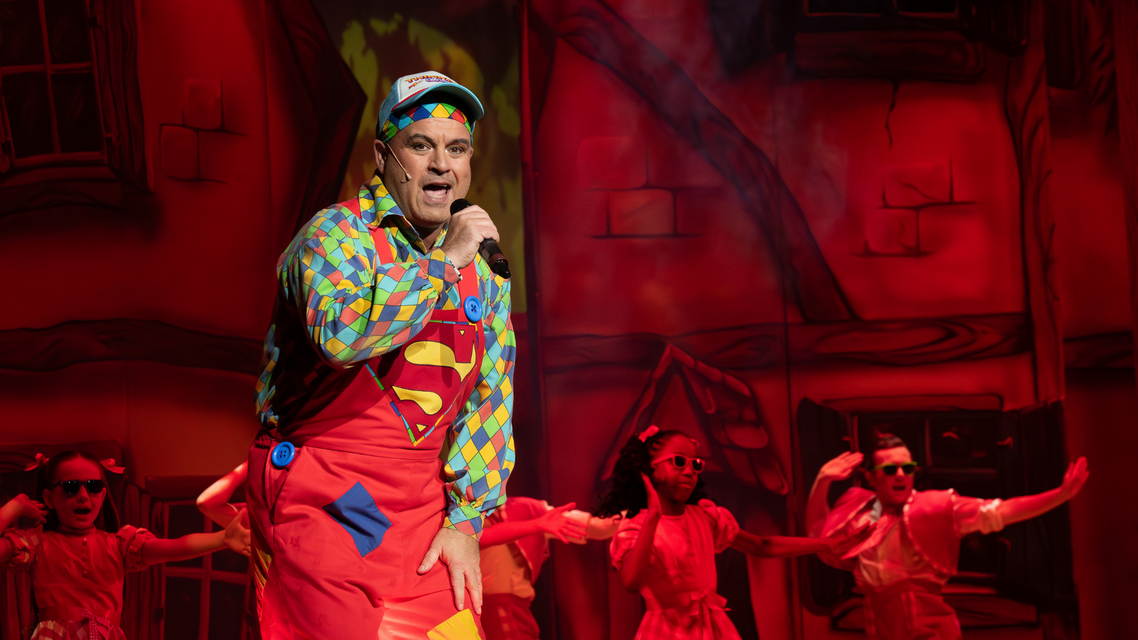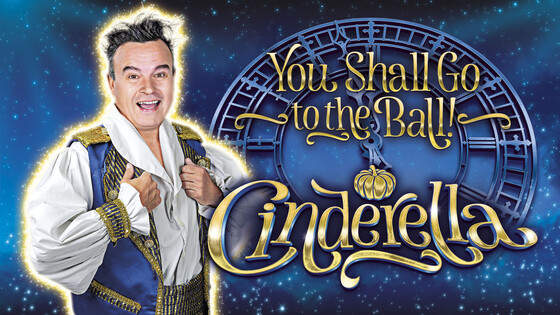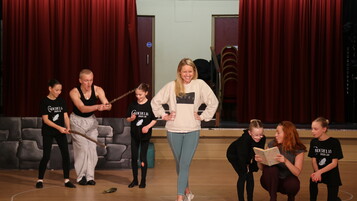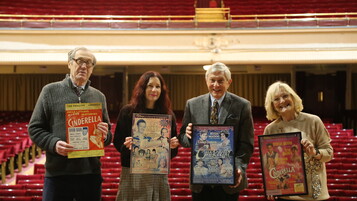News Story
Each winter, theatres across the UK glow with excitement and laughter as audiences of all ages shout together: "He's behind you!"
This can only mean one thing - panto season has arrived.
The family-friendly, festive activity has been delighting audiences for centuries, blending slapstick comedy, catchy songs, topical jokes, and a generous helping of audience participation into a tradition like no other. It’s an occasion where fairy tales are turned upside down, the Dame steals the show, and everyone, from toddlers to grandparents, become part of the performance – whether Dad likes it or not!
But there is more to this great British pastime than initially meets the eye. Let’s take a peek behind the stage curtain and see how much you know about pantomime beyond its pun-derful storylines and colourful characters!
Pantomime isn’t actually British
While pantomime feels unmistakably British today, its roots stretch back much further - all the way to ancient Rome. The pantomime we know and love actually evolved from commedia dell’arte, a lively form of 16th-century Italian street theatre where masked characters spun improvised tales of comedy and chaos.
When these exuberant sketches made their way to England, they transformed into mimes and Harlequinades – a play or scene in which Harlequin, a male character, has the principal role. Over centuries, this vibrant mix of physical comedy, storytelling, and music grew into the magical, larger-than-life performances that we all know and love today.
Panto’s magic and allure attracts top entertainment stars
It’s easy to see why actors are so often drawn to the bright lights of panto. Where else can you find all the theatrical delights rolled into one show - a lively plot, catchy songs, cheeky monologues, and the irresistible buzz of audience participation?
Legends like Sir Ian McKellen, Sir Stephen Fry, John Rhys-Davies, Jo Brand and Richard Wilson OBE have all embraced the magic of panto - and even Hollywood stars like David Hasselhoff and Pamela Anderson couldn’t resist getting in on the fun.
Who will be starring in this year’s production of Cinderella alongside Noel Brodie? Well, you’ll just have to wait and see!
Pantomime has become a global stage sensation
Pantomime may be a beloved British tradition, but its magic now extends far beyond the UK. Countries like Australia, Canada, New Zealand and South Africa have all embraced the fun and flamboyance of panto too!
In Jamaica, traditional pantomime is blended with rich, local folklore, spotlighting Anansi - the mischievous spider – which is a beloved figure in Caribbean and West African storytelling. Even across the Atlantic, the past decade has seen a growing wave of interest in the United States, as American theatres look to capture some of the festive sparkle and success of Britain's thriving panto scene.
Waiting for the baddie? Keep your eyes stage left!
It’s no secret that pantomimes thrive on the timeless battle between good and evil, but what many don’t realise is that even the way characters enter the stage follows a long-standing pantomime tradition.
In classic panto staging, the forces of good always make their entrance from stage right, while villains emerge from stage left. This isn’t just a quirky choice. It’s a tradition rooted in centuries-old symbolism, where the right side has conventionally been associated with Heaven, while the left was linked to Hell.
It's a subtle detail, but one that helps build the magical, moral world of pantomime from the moment the characters step into the spotlight.
The messy scene in panto has its own special name
One of the most eagerly anticipated moments in any panto is the infamous "slosh scene" - a riotous scene where chaos reigns supreme! Whether it’s buckets of soap suds, splashes of mysterious liquids, or the classic custard pie to the face, the “slosh scene” never fails to get the audience roaring with laughter.
This time-honoured tradition taps into the sheer joy of physical comedy, and for many, it’s not truly panto season until their favourite hero (or villain) has been well and truly covered from head to toe in comic catastrophe.
Until 1660, panto actors could only be male
The pantomime dame is a true cornerstone of panto, but the tradition of men playing these female roles originally came about out of necessity rather than choice.
In the early days of theatre, women were banned from performing on stage, so men would don wigs, dresses and exaggerated makeup to take on female parts. Even after the law changed in 1660, finally allowing women to tread the boards, the practice of cross-dressing stuck around, becoming a much-loved part of panto’s playful, topsy-turvy spirit.
And it wasn’t just men dressing as women either - women began to take on “breeches roles,” by assuming roles playing young male heroes. This long-standing tradition of bending gender norms has stayed at the heart of pantomime, adding to its cheeky, rebellious charm.
The first panto dame took to the stage in 1806
Although men had been playing female roles on stage for centuries, the pantomime dame as we recognise her today - outrageous, comedic, and larger than life - truly made her first proper appearance in Harlequin and the Mother Goose.
Premiering in 1806 at the Theatre Royal, Covent Garden, this production featured the character of Mother Goose, a mischievous, magical figure portrayed by a man named Mr. Simmons.
Unlike the more straightforward cross-dressing roles of earlier theatre, Simmons’ portrayal embraced the exaggerated costumes, bold humour, and playful parody that have become the hallmarks of the modern panto dame.
Panto is packed with superstitions
Did you know that it’s widely considered bad luck to perform the entire performance without an audience? Yes, that means that a full run-through should never happen until opening night.
The final lines - a cheerful pair of rhyming verses - are never spoken aloud during rehearsals. Instead, the cast will carefully dance around the words to save them for their very first outing on opening night.
Some actors become so used to dodging the lines that when the curtain finally goes up, they have to remind each other to get the final words out! It’s just one of the many charming rituals that add to the backstage magic – and mayhem – of panto.
Aladdin’s Widow Twankey gained her name from a tea
And finally, let’s not forget one of the most iconic dames in pantomime, Widow Twankey.
The comic matriarch of Aladdin has the quirky title, but did you know that her name, though seemingly whimsical, is actually a low-quality Chinese green tea? Twankey tea is made from older, ragged leaves, and the choice of this name for this iconic character likely plays on her own somewhat “weathered” persona.
How many of these facts did you know already?Cinderella, a UK Productions Ltd production, will run at Bournemouth Pavilion from Saturday 6 December 2025 – Sunday 4 January 2026. Tickets and more information are available here.
School and group rates are also available. For more information, contact us at groupsales@bhlive.org.uk or schools@bhlive.org.uk




